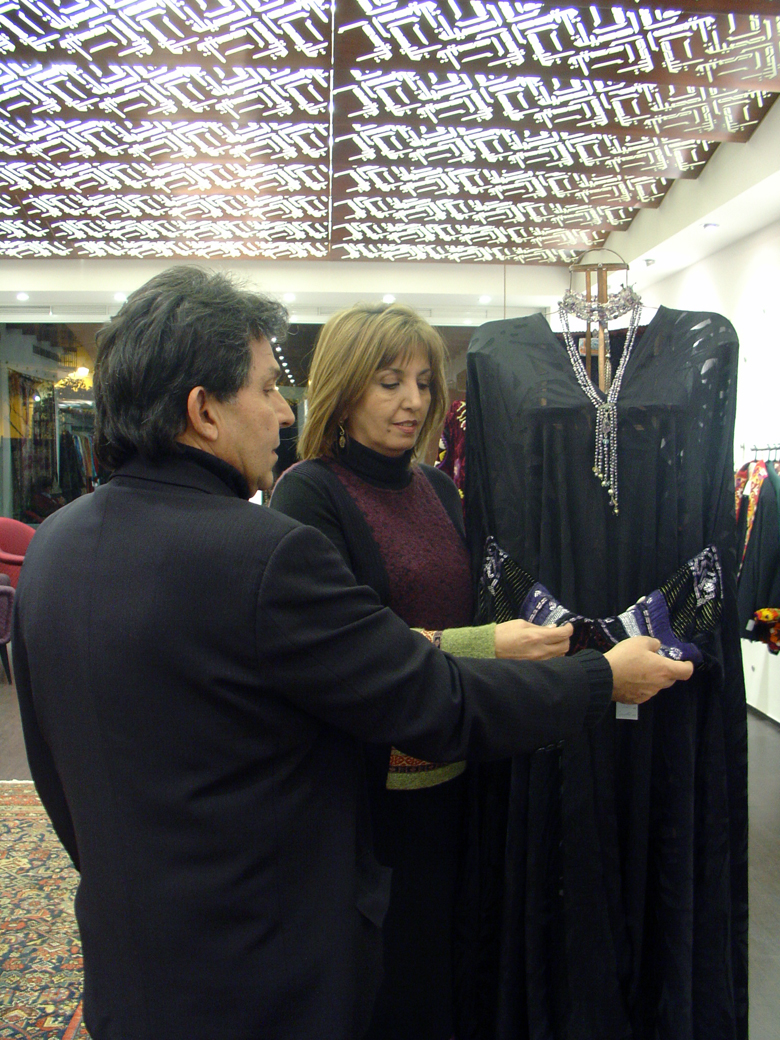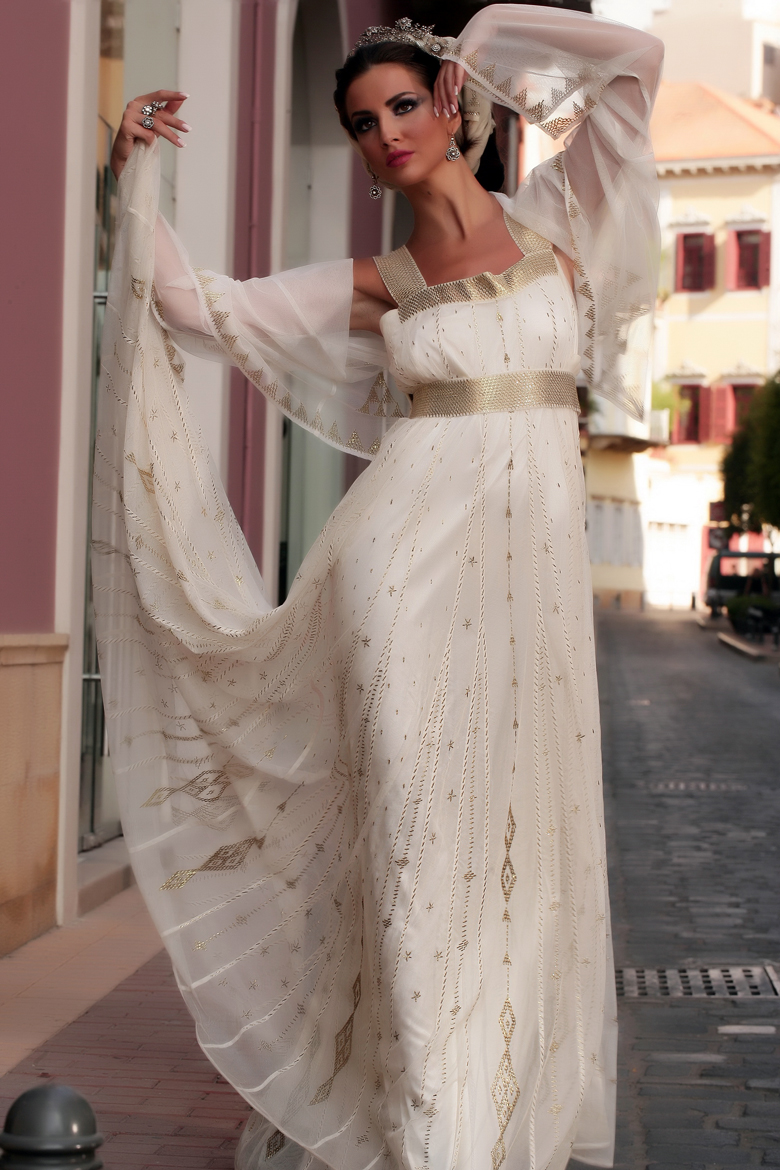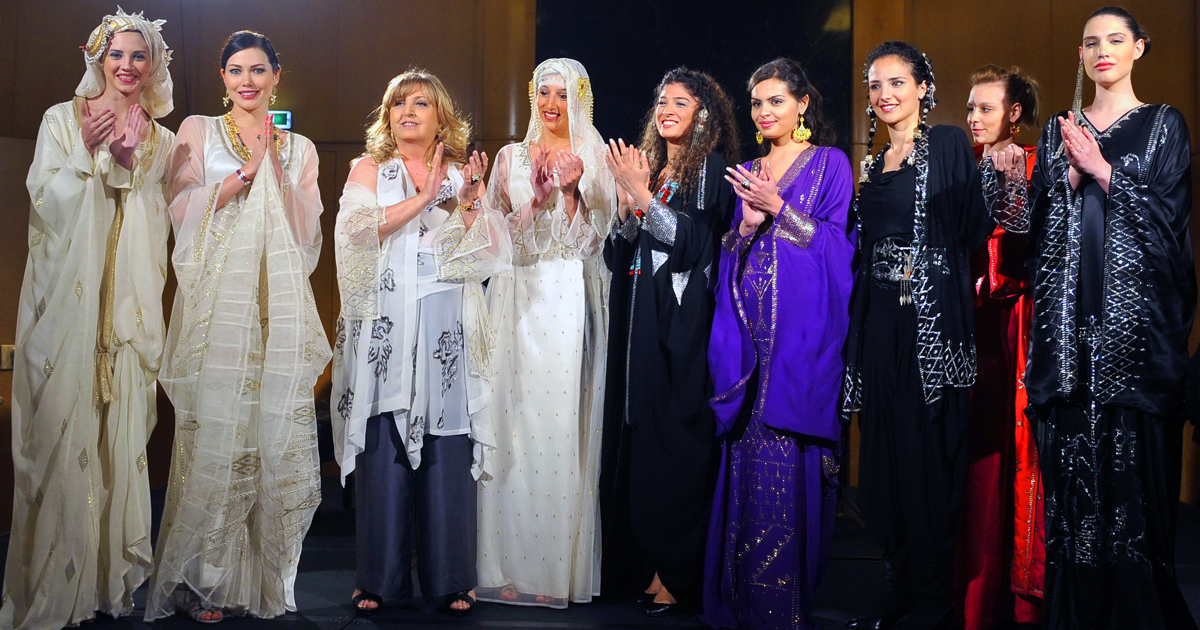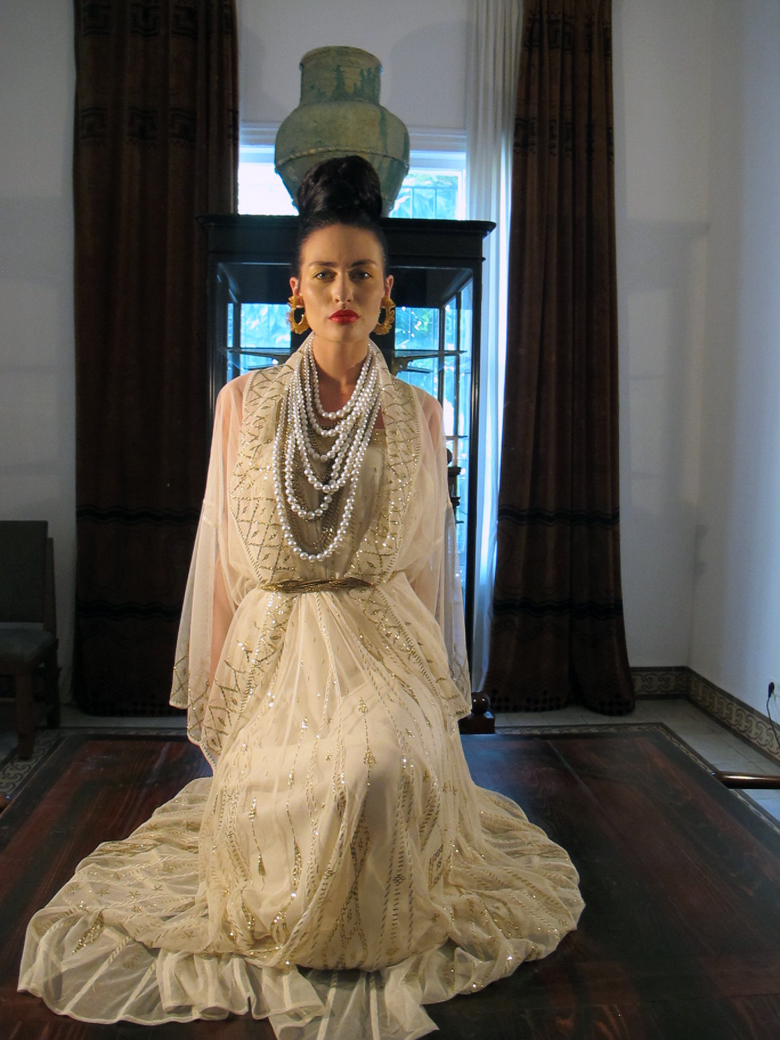Lace, embroidery, cross-stitching and other forms of delicate handwork have been passed down through the centuries and recognized by all. However, in Baalbeck, a unique embroidery technique known as taree remains a secret within the community.
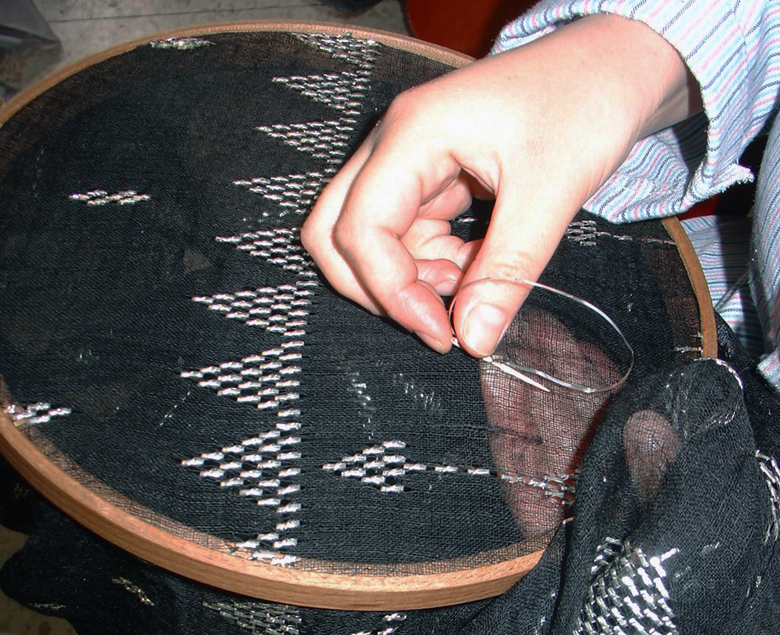 Taree is known as the silver thread embroidery, most commonly done on scarves and muslin dresses. The fabric that is traditionally black, beige or brown is stretched over a small embroidery hoop and a 2-millimeter thin flat thread is passed through the material using a triangular shaped needle. A stitch is formed by a quick stroke, almost like hitting the material (this is known as a tarka). It is then closed and the thread is cut by jiggling it. The seamstress repeats the work so that the standalone stitches form various designs and patterns.
Taree is known as the silver thread embroidery, most commonly done on scarves and muslin dresses. The fabric that is traditionally black, beige or brown is stretched over a small embroidery hoop and a 2-millimeter thin flat thread is passed through the material using a triangular shaped needle. A stitch is formed by a quick stroke, almost like hitting the material (this is known as a tarka). It is then closed and the thread is cut by jiggling it. The seamstress repeats the work so that the standalone stitches form various designs and patterns.
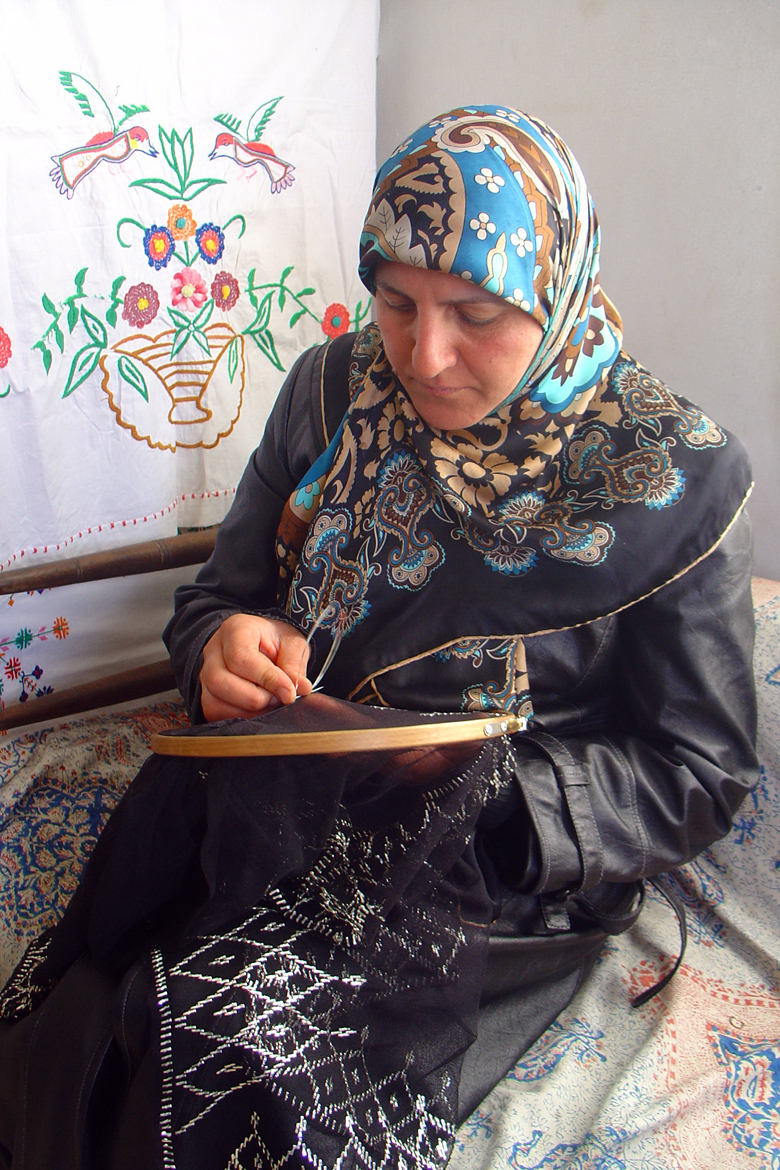 It is women that predominantly practice taree and the art is passed on from one generation to the next. As soon a girl is born, her mother begins working on a taree scarf and dress that she will wear on her wedding day. Traditionally, the bride wears a black dress first, made by her mother, and a white dress later on.
It is women that predominantly practice taree and the art is passed on from one generation to the next. As soon a girl is born, her mother begins working on a taree scarf and dress that she will wear on her wedding day. Traditionally, the bride wears a black dress first, made by her mother, and a white dress later on.
A taree dress and scarf were an essential part of a girl’s trousseau. Old taree pieces were made on veil-like fabric, usually made from camel wool. This would allow both needle and thread to pass without tearing.
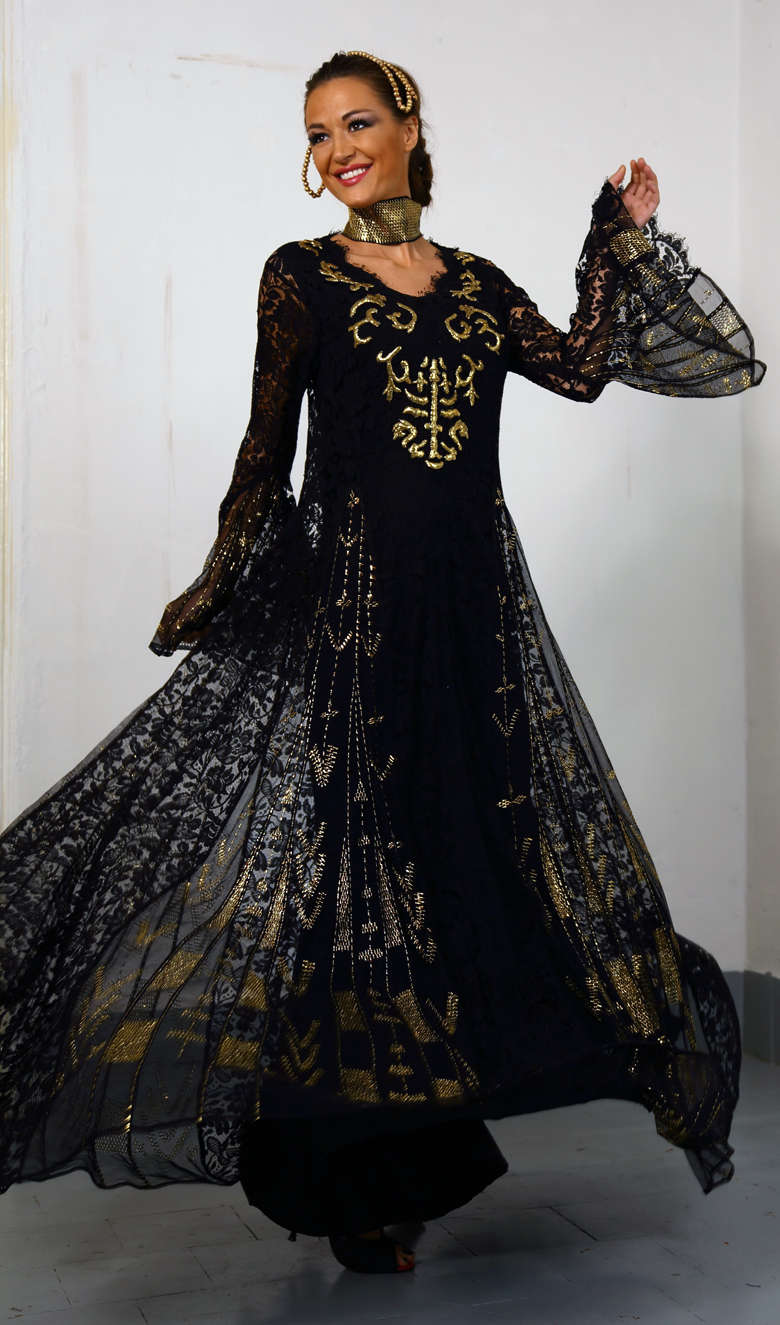
The taree tradition is not well known in Lebanon, as it is a unique craft to Baalbeck. In fact, very few Lebanese are aware of taree, unless they are from the area, and just like any traditional craft, it is slowly becoming a lost art.
Assyla: Reviving a lost tradition
